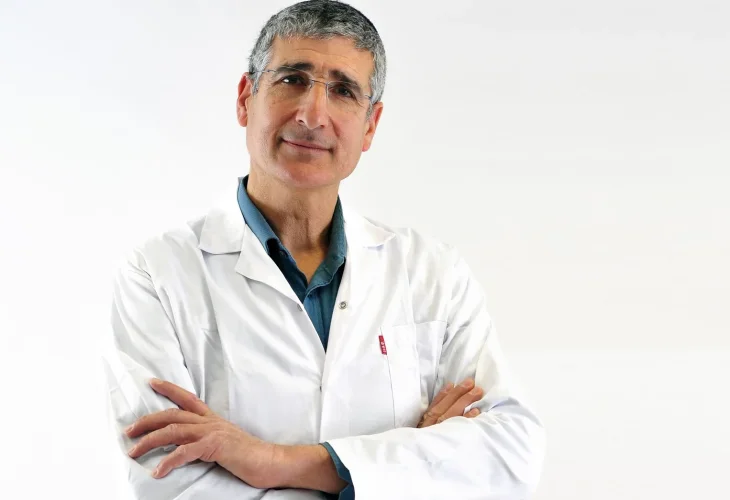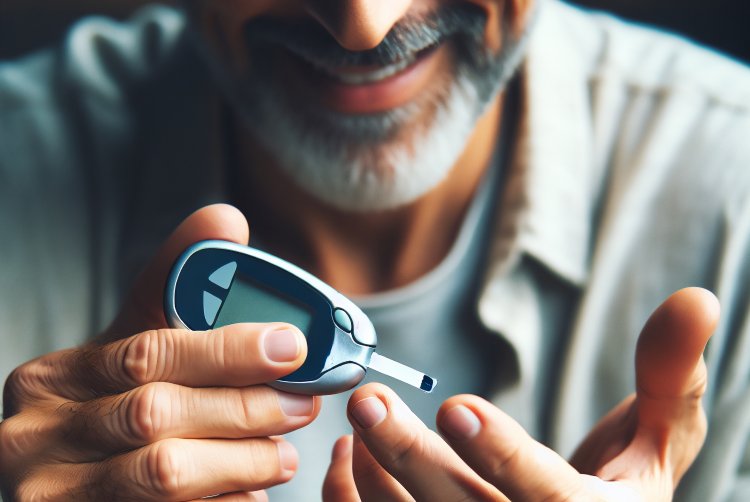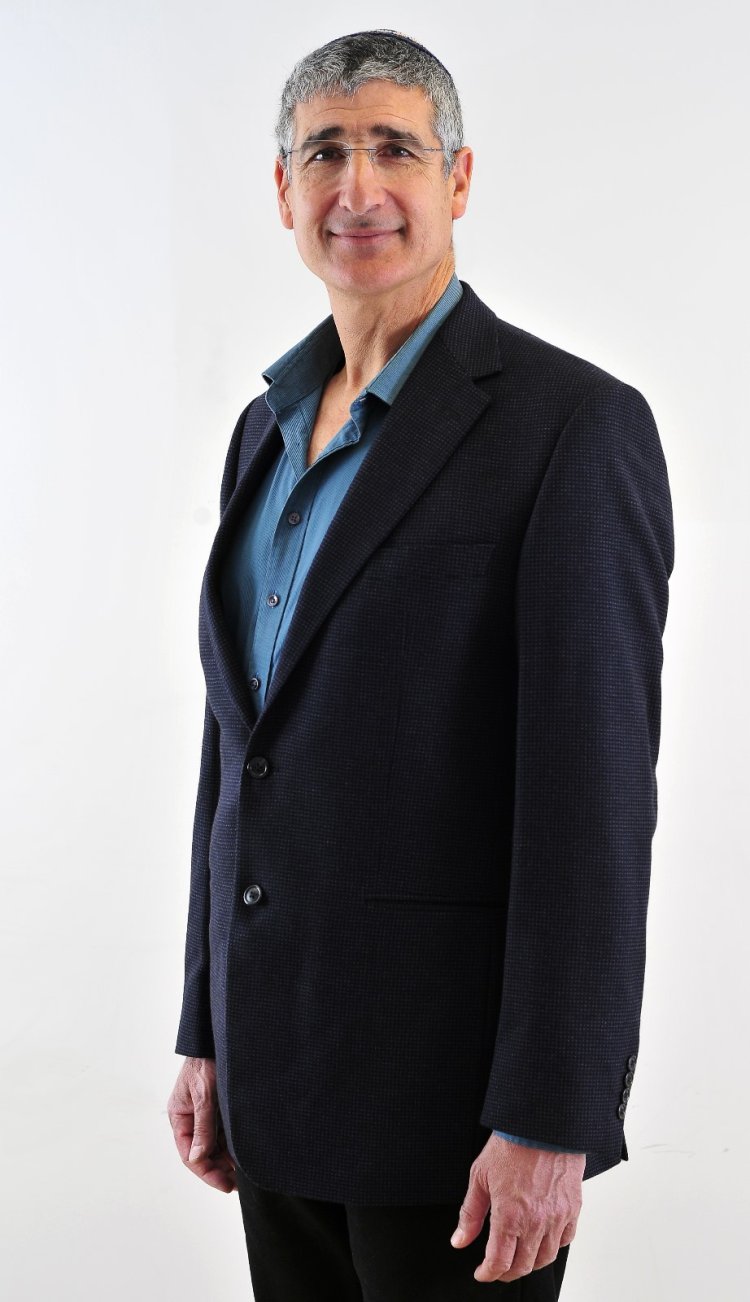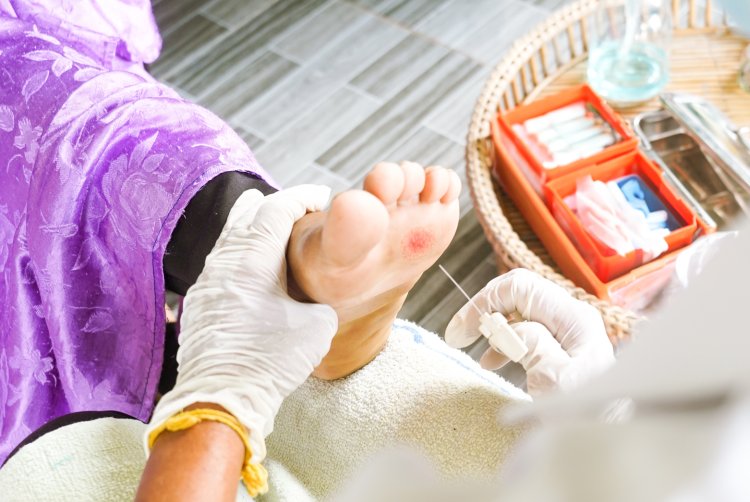Turning the Tide on Diabetes Amputations
Dr. Eyal Atias' mission to change disheartening statistics: diabetics often face drastic measures, but there's hope for their legs and quality of life. "We have the power to change the statistics," he insists.
 Dr. Eyal Atias, Ozone Clinics
Dr. Eyal Atias, Ozone ClinicsAt Dr. Eyal Atias' clinic, a young man walked in with a heartbreaking story. For years, he had battled severe diabetes, and due to a serious infection, doctors at the hospital decided that both legs would need to be amputated above the knee. But Dr. Atias saw an opportunity. He saw a chance to save the young man's legs and took on the complex challenge..
Dr. Atias began an intensive treatment regimen, which included personalized antibiotic treatment, a balanced diet, and additional medications. He closely monitored the young man’s condition, adjusting the treatment as needed..
After weeks of dedicated care, Dr. Atias opted for surgery. He amputated only a toe from the young man's foot, hoping it would suffice to save his legs..
The surgery was a success. The young man began to recover swiftly, the wound healed, and several months later, he is now moving freely on both legs, feeling like a true miracle has happened.
 (Photo: Shutterstock)
(Photo: Shutterstock)"Diabetes: Our Number One Issue"
Surprisingly, despite treating over 2000 cases of diabetic foot in the past 15 years, Dr. Atias grew up on the periphery, near the Dead Sea. He didn’t even graduate high school initially and wasn't interested in medicine until after his military service. It was then that he surprised everyone by committing to his studies, eventually earning high school certification and studying medicine.
He specialized in surgery, worked as a heart surgeon and general surgeon at Shaare Zedek Medical Center, then moved to Meir hospital in Kfar Sava, eventually moving into private practice where he founded the country's first department for treating hard-to-heal wounds, primarily caused by diabetes.
"I believe people don’t grasp the scope of diabetes as the number one national problem," he asserts. "Diabetic wounds are the hottest issue in healthcare today, yet despite its critical importance, we’re failing to tackle it effectively, resulting in significant failures."
Dr. Atias cites statistics: "Ten percent of the population over 18 has diabetes, but they consume 85% of the medical services offered. For example, about 85% of hospital bed days are occupied by diabetics, and over 90% of strokes, blindness, bypass surgeries of carotid arteries, heart failure, kidney failure, and limb amputations come directly from diabetes. In absolute numbers, there are more diabetic patients with chronic, unhealing foot wounds than cancer patients. It's unbelievable because when diabetics suffer from a foot wound, they may dismiss it as just a pedicure problem. Yet for 20% of diabetics, the infected wound is the cause of death. These are unequivocal statistics from the Ministry of Health and the OECD."
How does Israel compare to other countries on this issue?
"Israel ranks sixth globally in diabetes prevalence, with the highest rate of leg amputations relative to the population size. That's twice as high as some European countries and ten times more than more advanced countries."
What causes this failure? Why can't we stop the epidemic?
"The answer is clear: poor dietary habits and lack of health education. Because diabetes is undoubtedly a preventable disease from deteriorating completely. If we could just get diabetics to stop consuming sugars and carbohydrates and manage proper nutrition, they’d experience no complications, and that's proven."
 Dr. Eyal Atias, Ozone Clinics
Dr. Eyal Atias, Ozone ClinicsSpecial Techniques
To raise awareness, Dr. Atias states that people need to know the figures closely, something he tries to share in our impactful conversation. "When a diabetic has a non-healing foot wound at just one grade, their survival statistics become similar to stage 4 cancer at diagnosis, with a 5% mortality rate in the first year and 42% in the following five years. We cannot approach this with calm; we need to wake up. By the way, the mortality rate from amputating a leg below the knee is about 50% in the first year after surgery, and for most patients, this occurs within 60 days of surgery. These are awful statistics."
If you wondered what the most common surgery in Israel is, Dr. Atias drops another bombshell, noting that diabetic leg amputation tops many other surgeries, performed very often, even though many times it can be prevented, preventing the loss of the leg.
Dr. Atias personally decided to combat this severe phenomenon, making his clinic a haven for diabetics and their families. "Patients come to me after being recommended amputations in hospitals, according to statistics - if they underwent the surgeries as recommended, half wouldn't be alive by now. Fortunately, of the approximately 2000 patients we treated, only 50 required partial amputations, while more than 1950 recovered without needing amputations."
How do you achieve this?
"Our explanation is quite simple: Firstly, our center provides full attention to the diabetic patient by working with expert doctors from all fields, each very skilled in wound management, wound care, and diabetes regulation.
"We manage diabetes very assertively by proper guidance to the patient and their family, ensuring adherence to a carbohydrate-free diet without exceptions. We also use diabetes medications like insulin and others, closely monitoring the sugars to normal levels.
"Additionally, we take cultures from deep wound cavities and treat them with targeted antibiotics according to the bacteria sensitivity in the wound, even surgically draining abscesses and infections in the bone using special techniques we've developed. In most cases, we also use ozone gas as local wound treatment to enhance oxygenation and blood flow to the patient. Even after treatment completes, we don’t leave the patient, continuing with a thorough follow-up and ensuring they receive full guidance on everything required."
 (Photo: Shutterstock)
(Photo: Shutterstock)Saving the Leg
Why is treating the foot so critical for a diabetic patient?"
That's exactly the point, because amputation of a leg in a diabetic patient isn’t just a physical loss. Diabetes affects many systems in the body, including the heart, kidneys, and blood vessels. When there’s a wound on the foot, it signifies existing damage in these systems. Amputating the leg places additional strain on the heart, already weakened by the disease, significantly increasing the risk of heart attacks, heart failure, and mortality. Therefore, the issue isn’t just the damaged leg, but the whole medical condition of the patient.."
Dr. Atias wants to emphasize: "My goal isn’t to say: 'Come to my clinic.' Rather, I want diabetics to understand they can prevent the disease from worsening in the first place. If they heed the instructions and maintain a proper diet, they won’t need—neither my clinic nor hospitals, and that’s certainly the ideal situation."
And how do you explain why hospitals don't offer your treatment?
"From my experience with all hospitals, I can say they all try to improve the situation, but to truly succeed requires deep dedication and a personal commitment to each case, and in the current circumstances, hospitals lack the time and ability to dedicate to each patient and accompany them. By the way, I never promise complete success, and whenever a patient comes to me, I clarify their condition, and they know how critical it is and my effort to save their legs. But they can rest assured that I will do everything possible to save their legs and bring them to as full a recovery as possible."

